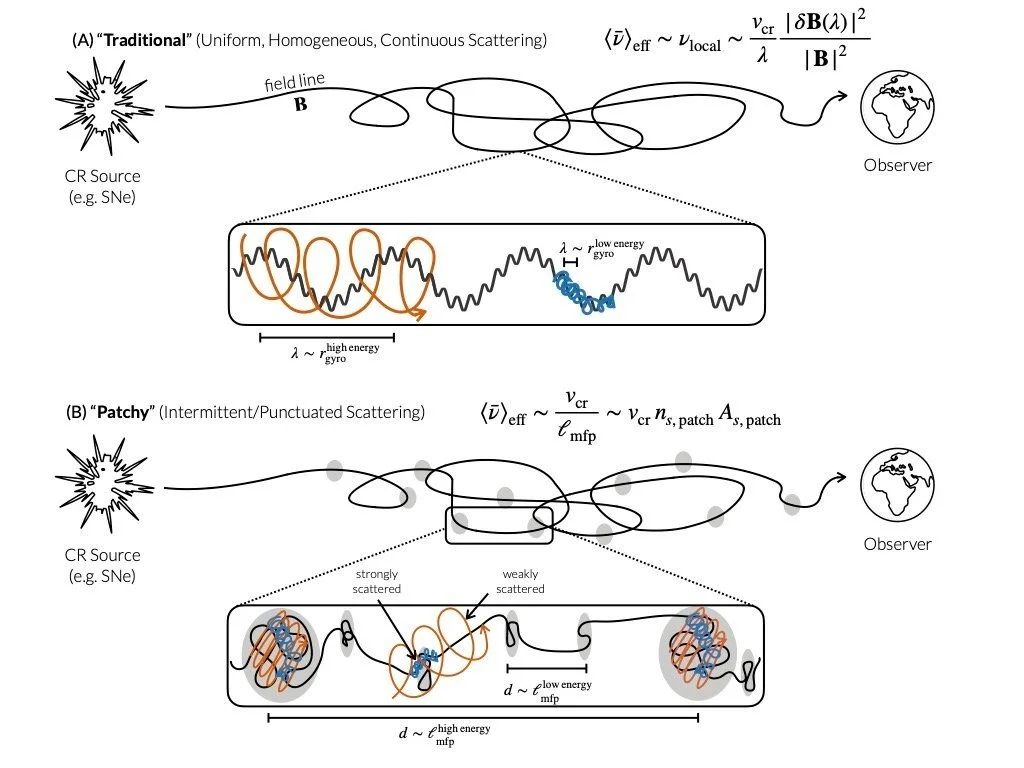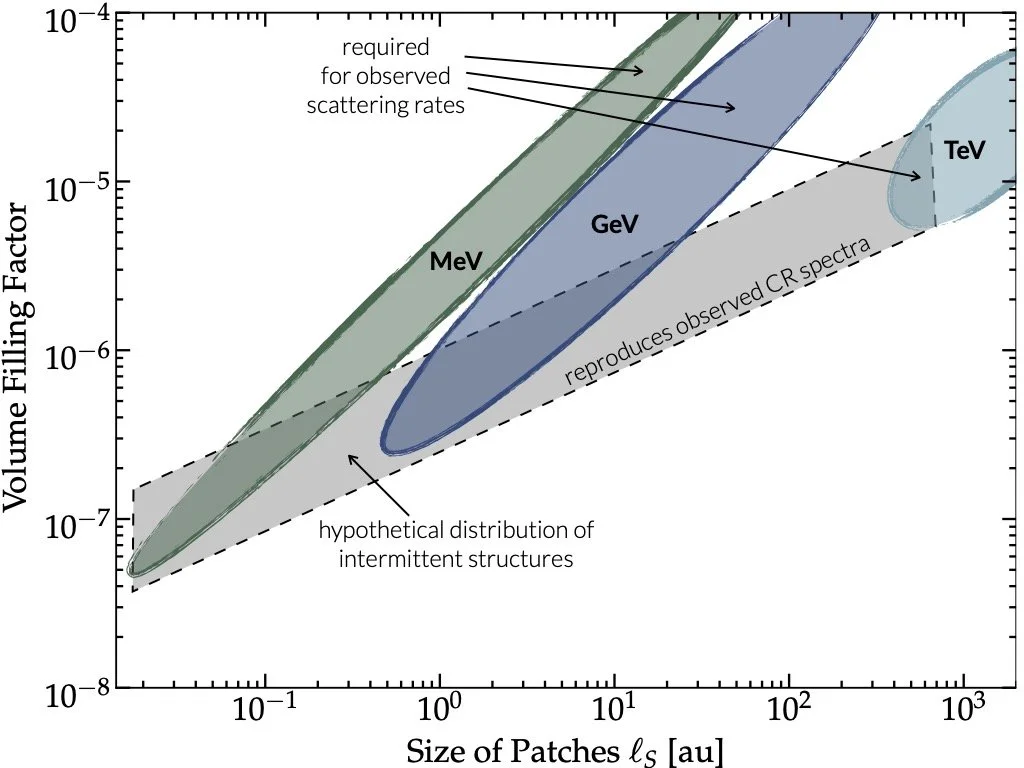Cosmic-ray sCattering may be “patchy”
Check out the full text on the arXiv!
About a third of the total energy in the galactic disk is in the form of low-energy (~MeV-TeV) cosmic rays (CRs), which affect galaxy evolution on all scales, from chemically-enriching proptoplanetary disks and ionizing giant molecular clouds, to driving instabilities in the interstellar medium and launching galactic winds that reach megaparsec distances from the galaxy. All of these processes are extremely sensitive to the assumed model of CR transport, which is severely under-constrained (see my work on this in Butsky and Quinn 2018, Butsky et al. 2020, and a fun diagram here). The missing piece in simulating CR transport on galactic scales is understanding the physical origin of CR pitch-angle scattering on ~AU scales.
We recently showed that traditional theoretical models of CR scattering, which assume that the CR pitch angle is continuously perturbed throughout the volume-filling ISM, are fundamentally incompatible with observations. In this work, we propose a novel category of “patchy” CR scattering theories (Figure 1), in which CRs free stream between intermittent strong scattering events. While we show that most “macroscopic” ISM structures are unlikely to be the primary source of CR scattering (e.g. GMCs, SNRs, PNe, stellar magnetospheres, H II Regions), we show that a variety of intermittent ISM structures with plausible size/volume-filling-factors (Figure 2) merit follow-up studies.
Figure 1: A cartoon depiction of traditional, continuous cosmic-ray scattering models (top) and our proposed patchy scattering model (bottom). Any successful model must reproduce the observed power-law relationship between the average cosmic-ray scattering rate and cosmic-ray energy (/rigidity). In both cases, cosmic rays are accelerated by galactic supernovae and travel around tangled magnetic field lines before being detected at (or near) the Earth. Magnetic fluctuations the size of a cosmic-ray gyroradius perturb/”scatter” the cosmic-ray pitch angle, Traditional models assume that this scattering is “continuous” throughout a homogenous ISM. In order to produce the observed dependence between cosmic-ray scattering rate and energy, this assumption imposes a specific power-law of magnetic fluctuations that has not yet been explained theoretically. We propose an alternative, intermittent, model of cosmic-ray scattering in which cosmic rays “free stream” near the speed of light most of the time, and are strongly scattered in discrete “patches”. In this model, smaller patches scatter lower energy cosmic rays and larger patches scatter both, lower and higher energy cosmic rays. Therefore, we can avoid the pitfalls of continuous scattering theories with the right distribution of scattering patch sizes.
Figure 2. The minor axis and volume-filling factor required of the patchy scattering model. The black shaded regions shows a hypothetical intermittent scattering model that would reproduce all of the required observations. A natural category of candidates for the scattering structures suggested above is intermittent turbulent structure. The required volume-filling factors are intriguingly similar to some estimates for the volume-filling factors of “tiny-scale atomic structures” and “extreme scattering events”. Note these are categories of ISM structures classified by their effects on radio waves: physical explanations for such structures range widely, but often invoke intermittent turbulent structures, which we discuss below.

